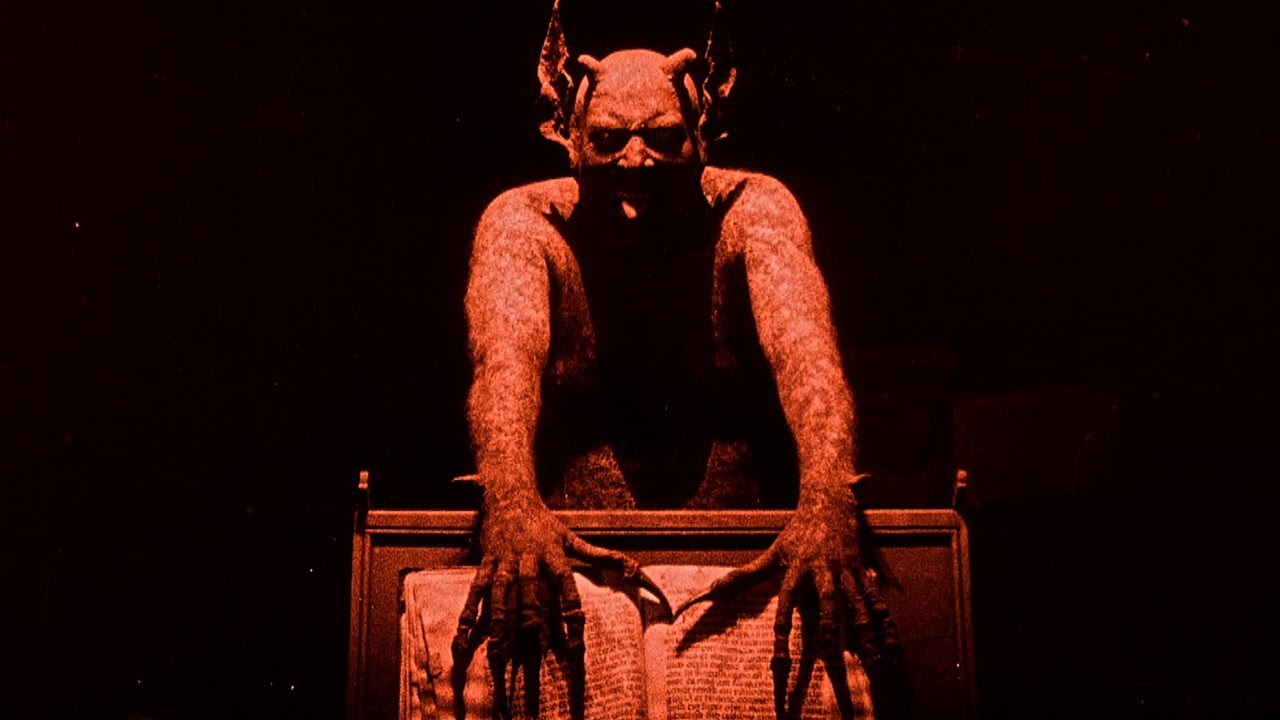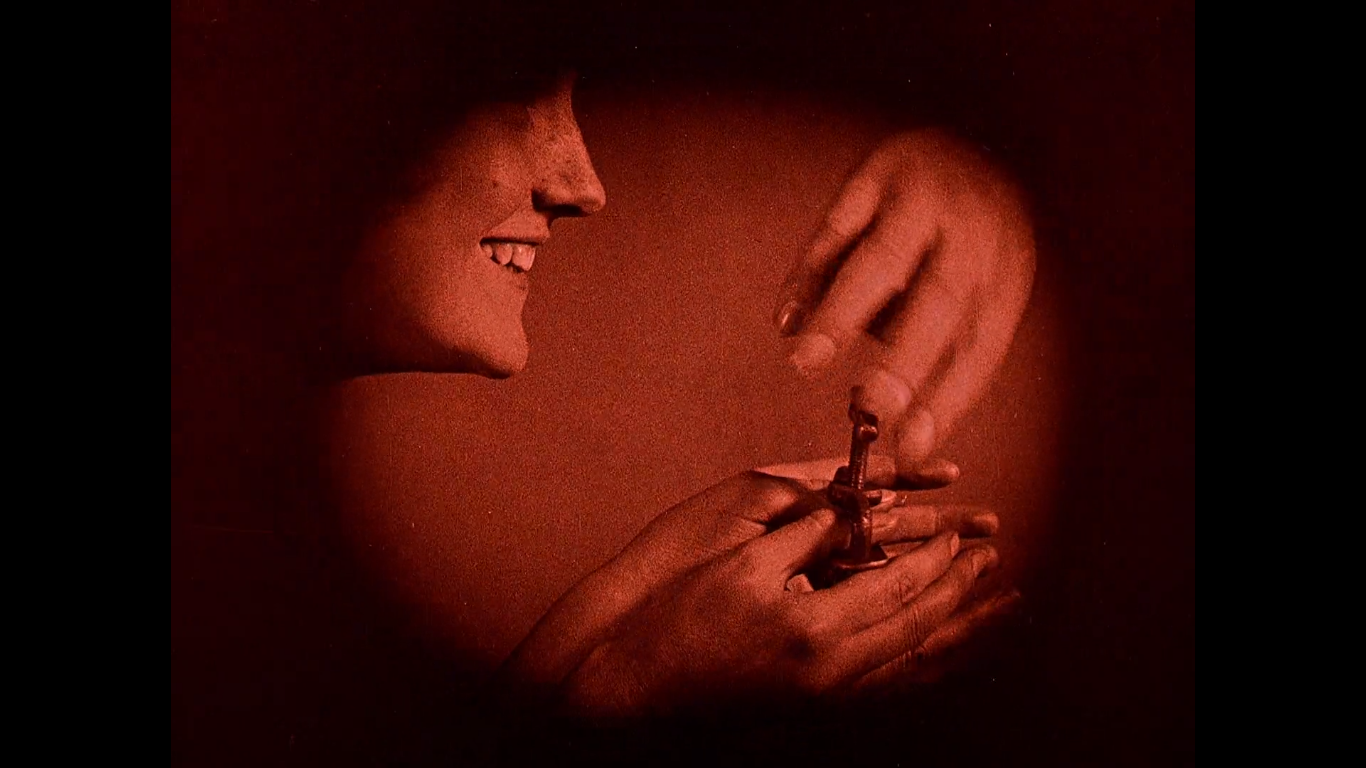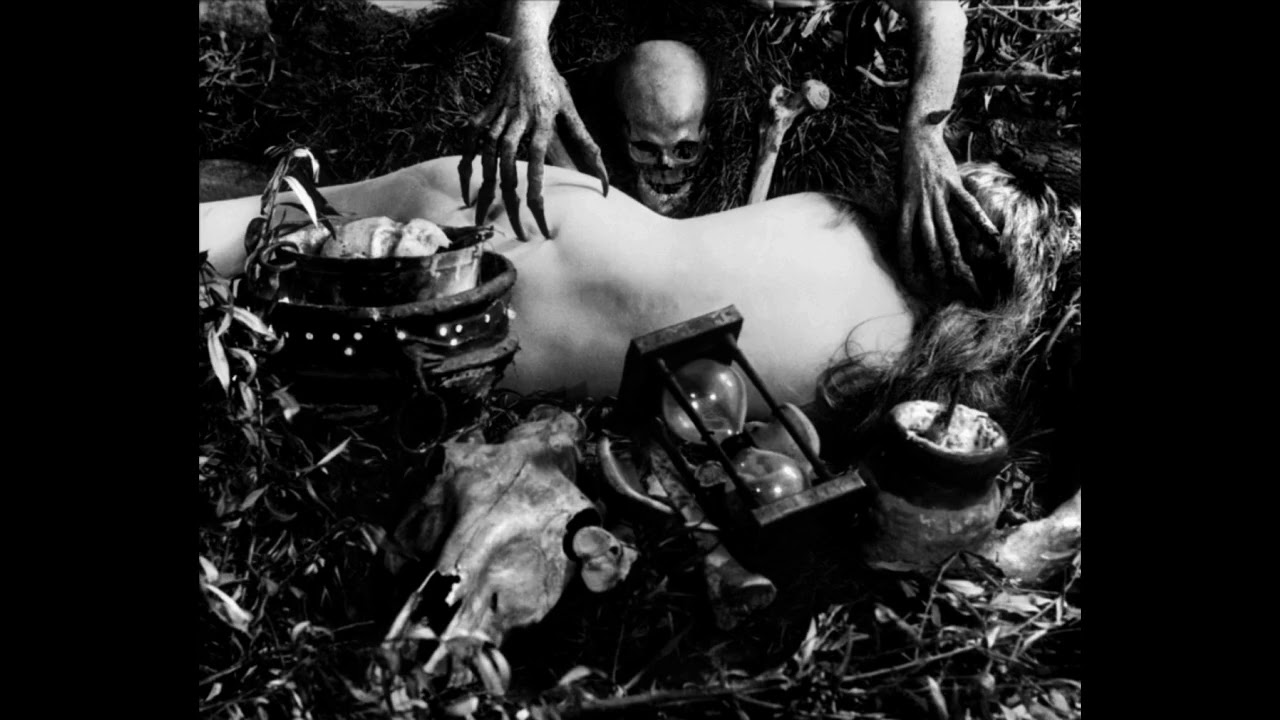He’s a classic, essential horror movie stereotype. He has hung around for centuries, but he really came into his own once movies about hauntings turned “scientific”: The Haunting or The Stone Tape, for example. He’s the scientist who wants to empirically study demonic/ghostly activity, and he’s one of my favorite character types in the classic era. That stereotype somehow became real and made a movie, and that movie is Häxan.
That cliché has split into two over the last couple decades, into the complete scientist atheist non-believer empiricist of The Last Exorcism or the hard-nosed empirical but deeply religious and believing exorcists of The Conjuring. That split is extremely irritating: it not only gives a patina of seriousness to the scam artist Warrens, but removes all the weird, liminal fun of figures like Dr. John Markway from The Haunting.
 Häxan is chock-full of liminal fun. Benjamin Christensen, the director and writer, dances through a number of roles. He is the researcher, who put together all of this material on historical witchery (mostly snatched uncritically and salaciously from the admittedly salacious Malleus Maleficarum). He is the narrator, who occasionally slips into the first person in the slides.
Häxan is chock-full of liminal fun. Benjamin Christensen, the director and writer, dances through a number of roles. He is the researcher, who put together all of this material on historical witchery (mostly snatched uncritically and salaciously from the admittedly salacious Malleus Maleficarum). He is the narrator, who occasionally slips into the first person in the slides.
He is the director, directing the Halloween haunted house torture show, to whom the actors as actors occasionally speak. (At two points, he is placed within the world of the re-enactment. Once, a woman playing an elderly victim of the inquisition tells him she has seen the devil. Later, a young actress “insists” on trying out the thumbscrew; the camera cuts away as she begins to grimace, and there is a Hitchcockian slide about the “secrets” he got out of her.)
He has a scientific mind, and scorns the absurd beliefs of the horrible past – but ends the film with a sequence in the present day, drawing connections to contemporaneous misunderstandings of mental health. (Unfortunately, Christensen is rather in love with the diagnosis “hysteria”, which makes him seem only a little more informed than the inquisitioners.)
 Director, writer, researcher, scientist: an objective mind, dealing with the matter objectively.
Director, writer, researcher, scientist: an objective mind, dealing with the matter objectively.
But then there is Christensen as someone who takes delight and pleasure in the entire unscientific thing. He is the first enjoyer of the film we are watching.
When we see drawings from the past, they are prefaced by his slides, some of which make plainly aesthetic judgments (he delights in one medieval toy that depicts hell). As the slides direct us to parts of the picture, his is the quivering, phallic stick that helps guide us – and strokes the pictures, almost lovingly.
He clearly has some fascination with young, bound women that can’t be excused by the material. By placing himself within the world of the recreation – with the aforementioned slide about the thumbscrew, for example – he makes clear his pleasure in the entire production.
That fascination cloaked within a cover of scientific authenticity is what always draws me through Häxan no matter how many times I watch it. I can’t imagine anything but Benjamin Christensen running off as soon as the movie is over with some primitive sensitive equipment and a couple of students to an old mansion, as much excited to find ghosts as certain he won’t.

